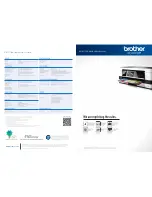iCON robot 60/iCON builder 60, Check & Adjust
39
5
Check & Adjust
5.1
Overview
Description
Leica Geosystems instruments are manufactured, assembled and adjusted to the best
possible quality. Quick temperature changes, shock or stress can cause deviations and
decrease the instrument accuracy. It is therefore recommended to check and adjust
the instrument from time to time. This check and adjust can be done in the field by
running through specific measurement procedures. The procedures are guided and
must be followed carefully and precisely as described in the following chapters. Some
other instrument errors and mechanical parts can be adjusted mechanically.
Electronic adjust-
ment
The following instrument errors can be checked and adjusted electronically:
If the compensator and the horizontal corrections are activated in the instrument
configuration, every angle measured in the daily work is corrected automatically.
Mechanical adjust-
ment
The following instrument parts can be adjusted mechanically:
• Circular level on instrument and tribrach
• Optical plummet - option on tribrach
• Allen screws on tripod
Precise measure-
ments
To get precise measurements in the daily work, it is important:
• To check and adjust the instrument from time to time.
• To take high precision measurements during the check and adjust procedures.
• To measure targets in two faces. Some of the instrument errors are eliminated by
averaging the angles from both faces.
During the manufacturing process, the instrument errors are carefully determined and
set to zero. As mentioned above, these errors can change and it is highly recom-
mended to redetermine them in the following situations:
• Before the first use
• Before every high precision survey
• After rough or long transportation
• After long working periods
• After long storage periods
• If the temperature difference between current environment and the temperature
at the last calibration is more than 20°C
l, t
Compensator longitudinal and transversal index errors
i
Vertical index error, related to the standing axis
c
Horizontal collimation error, also called line of sight error
a
Tilting axis error
ATR
ATR zero point error for Hz and V - option
















